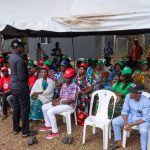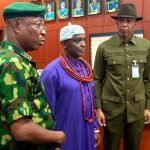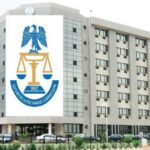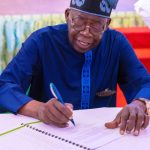Adesina, AfDB Boss, Seeks Pan-African Solution for Africa’s $70bn Yearly Infrastructure Gap
 “If we don’t fix Africa’s infrastructure financing gap which we put at some US $60-70 billion a year we will continue to take two percentage points off Africa’s annual growth rates. And we cannot allow that to happen,” said African Development Bank President Akinwumi Adesina at the first ever Global Infrastructure Forum in Washington.
“If we don’t fix Africa’s infrastructure financing gap which we put at some US $60-70 billion a year we will continue to take two percentage points off Africa’s annual growth rates. And we cannot allow that to happen,” said African Development Bank President Akinwumi Adesina at the first ever Global Infrastructure Forum in Washington.
Sharing a panel with the heads of nine other Multilateral Development Banks and the chair of the G24, he said, “The funding that we in the MDBs can provide is large – but above all it is our role to leverage further funds. The funds on capital markets which are available for infrastructure far exceed what we have: in Africa, we will leverage the continent’s pension funds, its sovereign wealth funds and its private equity funds, which we estimate at some US $520 billion. I am convinced that the future of Africa lies inside Africa – using African resources, and utilising African markets.”
The Forum with the theme: ‘Spending more, spending better’ was introduced by World Bank President Jim Kim and UN Secretary-General Ban Ki-moon. Kim welcomed the two new MDBs in 2016: the Asian Infrastructure Investment Bank and the BRICS New Development Bank. “In
Addis Ababa last year, the MDBs were charged with finding ways to turn ‘billions into trillions to finance the world’s development needs. And yet our own funding has gone down from US $112 billion in 2014 to US $83 billion in 2015.”
“I may be the colourful one, but you the heads of the MDBs are the powerful ones. You have the money to deliver on our policies, said Ban Ki-moon.”
Adesina emphasized that the core of the development challenge in Africa is the energy challenge. “With 650 million Africans without electricity, we have to light up and power Africa.” He explained how a further US $12-billion AfDB investment in energy over the next five years is expected to unlock an additional US $40-50 billion in funding from the private sector. He pointed to the role of the Africa50 Fund in preparing bankable infrastructure projects and unlocking untapped African resources. He called on other MDBs to follow the lead in innovating in balance sheet management, after the recent exposure exchange between AfDB, Inter-American Development Bank (IADB) and the International Bank for Reconstruction and Development (IBRD), which has freed up some US $10 billion for extra infrastructure lending for the AfDB.
“It is clear that the old development model is no longer of use. The new development model is based on bringing in private capital, President of the European Bank for Reconstruction and Development, Suma Chakrabarti, said.
“Our MDB task is ‘lending and blending’ and advising. That is why MDB advisory services are important, as the quality of the projects must get better. Adesina picked up the theme: We at the AfDB are working alongside our member governments to strengthen the capacity to examine and prepare infrastructure projects. Further, we believe that accountability and transparency in public infrastructure projects is key. Choosing the right contractors in the right way and giving local communities a say in the infrastructure projects that serve them, Werner Hoyer, President of the European Investment Bank, said”
Jim Kim was unequivocal about the global infrastructure and development challenge, and the way to meet it. “There is no way we will meet the SDGs and the goals set by COP21 unless we create multiple layers of financing. We as MDBs were created as leveraging mechanisms, going to the capital markets backed by our AAA ratings. The best investment a Finance Minister can make is with the MDBs. My message: invest early and often in the MDBs to deliver infrastructure”








